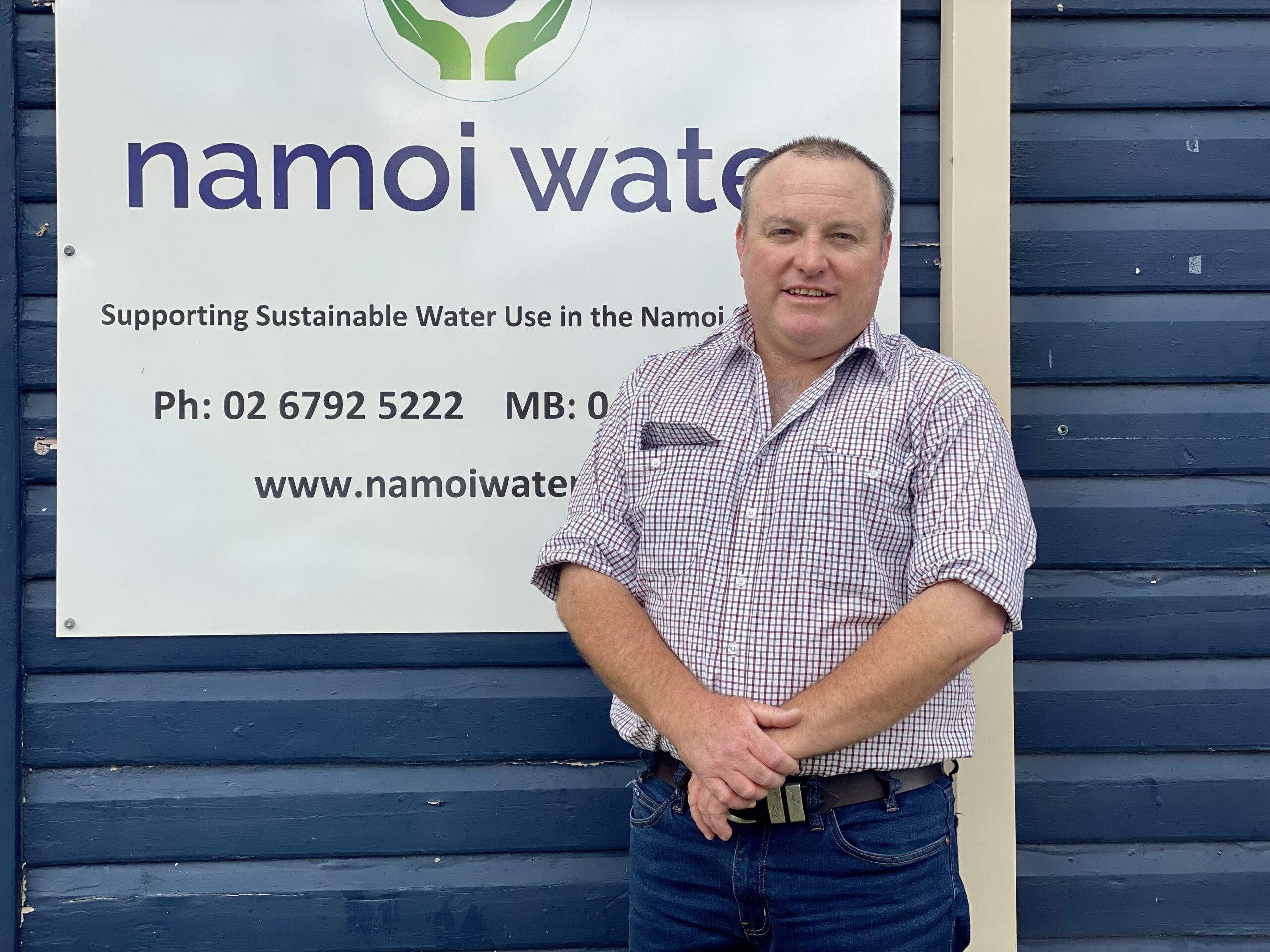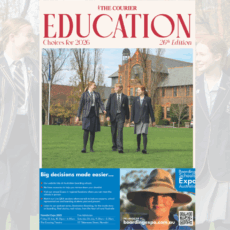Namoi Water executive officer Mick Coffey said he’s “not surprised” the June 30, 2024, deadline to deliver the Murray Darling Basin Plan has been extended but he stressed it was vital the time is used productively to consult with rural communities “to get it right”, and he raised concerns about the devastating impacts of previous water buyback schemes.
“It’s important the time is spent wisely, out in the communities talking with people who actually understand the Basin,” said Mr Coffey about the deadline extension.
“It’s the correct decision because it wasn’t going to be achievable in that timeframe.
“It was always going to take some time with the change of federal government for them to recognise that.
“They’ve played politics, and the science was telling us it wasn’t going to be achievable – there’s now a little bit of breathing space.”
On July 25, Water Minister Tanya Plibersek announced: “I have received from the Murray-Darling Basin Authority, a copy of the report that they released this morning, which confirmed what I have feared for some time – it’s not possible to deliver the Murray Darling Basin Plan in the legislated time frames.
“That’s extremely disappointing and extremely concerning.
“To give you some idea of the scale of the challenge we face, the best estimate we’ve got is that we’ll be about 750 gigalitres short of delivering on the Plan by the middle of next year.
“That’s equivalent to 300,000 Olympic-size swimming pools short.”
The aim of the $13 billion Murray–Darling Basin Plan is to bring the Basin back to a healthier and sustainable level, while continuing to support farming and other industries for the benefit of the Australian community.
It was signed into law in 2012, after the Commonwealth reached an agreement with each of the Basin states: Queensland, NSW, Victoria, South Australia as well as the Australian Capital Territory, but it has been a complex and contentious process.
Earlier this year, the federal government announced it would open a tender to buy back 44.3GL of water entitlements from willing sellers in six different catchments in NSW and Queensland to help deliver the Basin Plan.
Committing $3.1 billion under the Sustainable Rural Water Use and Infrastructure Program to assist with bridging the gap to the sustainable diversion limits in the MDBP.
The Namoi is listed under the targeted catchments for purchase with 9.5GL of surface water required.
These water buybacks are voluntary, but Mr Coffey has flagged serious concerns about the consultation process, no criterion when it comes to socio-economic impacts and therefore the potential negative flow-on effects to local economies, down main streets and across the wider community.
“We need to be hyper-aware of water recovery – they could turn Wee Waa into Collarenebri if they don’t do things properly,” said Mr Coffey.
In 2016, an MDBA review of the socio-economic effects of the removal of water from farming revealed Collarenebri lost more than 80 per cent of its irrigated land and more than a third of its farm employment after water buybacks.
Socio-economic concerns led to water buybacks being capped by the former Coalition government in 2015 and ruled out in 2020 by then Water Minister Keith Pitt.
“It is acknowledged there is 9.5GL of water to be recovered from the Namoi catchment for environmental purposes, but it needs to be done with a considered, rational approach with all options considered and not until NSW has accredited Water Resource Plans – that could show less or even no water is needed to be recovered,” said Mr Coffey.
“If they’re removing water (from productive farming use), they need to be able to show environmental outcomes that are measurable and achieve their intent.
“Grocery bills are rising and every megalitre that goes from food and fibre production means a rise in your groceries.”
Mr Coffey said consultation with key stakeholders and communities was essential.
“There are people living and breathing in these communities from one end of the Basin to the other …and we’re the ones who are going to suffer if it’s not done right.”
In March, Mr Coffey attended a Narrabri information session ahead of the Bridging the Gap tender opening and he told The Courier he was “bitterly disappointed” with the way proceedings were conducted.
“There were only about six or seven license holders there and it felt more like an information download with no consultation,” he said after the session.
“The meeting was not open to enter freely, was held at short notice and very few farmers were invited to attend. We need to know that our communities won’t get left behind or be devastated by these buybacks.”
The tender closed in May, and it’s understood offers could be made to eligible water license holders as early as this month.
Narrabri Shire Council mayor Ron Campbell said there needs to be more investigation undertaken into the socio-economic impacts on the community and a study presented.
“We don’t want buybacks,” said Cr Campbell.
“We manage our catchment very well.
“Any water taken away would affect the economy of those towns involved, not just farmers, but the whole community.
“What impact is it going to have on our community?
“I have asked that question of the (MDBA) Authority.
“There needs to be more investigation into the socio-economic effect on the community.”
At the July 25 press conference Mr Plibersek said, “There’s no way of achieving the plan without buying water.”
Last week, NSW Premier Chris Minns said he did not support water buybacks, when asked about them in state parliament by Member for Murray Helen Dalton, “Currently, water buybacks in the
Murray Darling Basin cannot occur if they cause negative socio-economic impacts. Will the Premier protect rural communities and support this vital safeguard?”.
Mr Minns replied, “I make it clear that the government does not want and does not support proposals that will have a negative impact on NSW regional communities and economies.
“We have made that clear to the Commonwealth as well.
“We do not want buybacks used for water recovery, particularly when you consider that much of the infrastructure work promised by successive Commonwealth and NSW governments for the Murray sector of the basin has not been provided, nor has it been provided to the Darling sector.
“At the end of the day, if you are purchasing water to sit in a dam and not be used for environmental purposes at some point on the river system, what is the point of it?
“We have made it clear to the Commonwealth that we want to work with it in relation to the Murray Darling plan. That means progress.
“Of course that means infrastructure works across the entire system so that when environmental water is purchased it actually gets to sections of the river that require that water—rather than purchasing it, having it sit in a dam and never using it for environmental recovery.
“We are cognisant of the fact that, if you are purchasing water from regional communities and you are not taking into consideration the effect on that regional community’s economy, it will have massive impacts on its towns, small- and medium sized businesses, economic growth and employment.
“We have taken that into consideration.
“We have made our views abundantly clear to the Commonwealth government.
“That does not mean we are walking away from the Murray Darling Basin Agreement, but the Commonwealth is in no doubt about our position.
“A part of this process also requires the NSW government and all governments to make progress when it comes to those infrastructure changes on the river system.
“For about 12 years not much was done on either river network, the Darling system or the Murray system.
“The National Party at the Federal and State level pretended that the Murray-Darling Basin process was continuing and that there had been progress when it comes to environmental water and outcomes, particularly in those far-reaching regional communities.
“But at the end of the day they gave lip-service to the agreement while stalling any appreciable change.
“That is what must change from the previous government to the current government.
“We have made our position clear, and we will continue to engage with the Commonwealth government, but we do not want to see regional communities go backwards.”
Member for Barwon Roy Butler said, “The Premier’s answer to the Member for Murray’s question in Parliament gives cause for some relief, in that economic outcomes are on the table as a balance to how the environmental outcomes are being achieved.
“The Commonwealth will have to amend its law re (regarding) the Basin plan time extensions and I hold deep concerns over the lack of a draft, which would allow us to see what deal may have been done to secure passage through the senate.
“It is a complex topic and simple answers often have terrible environment and economic outcomes.”
Member for Parkes Mark Coulton said he welcomed the deadline extension.
“It seems that the Minister for the Environment and Water, Tanya Plibersek, has finally realised after eighteen months that delivery of the plan is not so straight forward, involving complexities not all within federal government control,” said Mr Coulton.
“I maintain that the Labor government’s promise of an additional 450 gigalitres of water for the environment should not be delivered unless it is proven to result in only positive or neutral socio-economic outcomes.
“Water for the environment is great, but should be managed in a way which avoids damage to local communities. Even with this in place, it must be acknowledged that it cannot totally cancel the impact of extremes such as drought or flooding.”
However, Ms Plibersek is blaming the former government for the MDBP delivery delay.
“This is a result of close to a decade of deliberate sabotage of the Murray Darling Basin Plan by the previous Liberal and National government,” Ms Plibersek said.
Mr Coffey hopes the extension time is used productively and basin communities aren’t treated like political footballs.
“This time needs to be used productively, everyone in the Namoi catchment either directly or indirectly benefits from irrigated farming – we’re in a hell of a fight here for all of our futures.”
To order photos from this page click here










